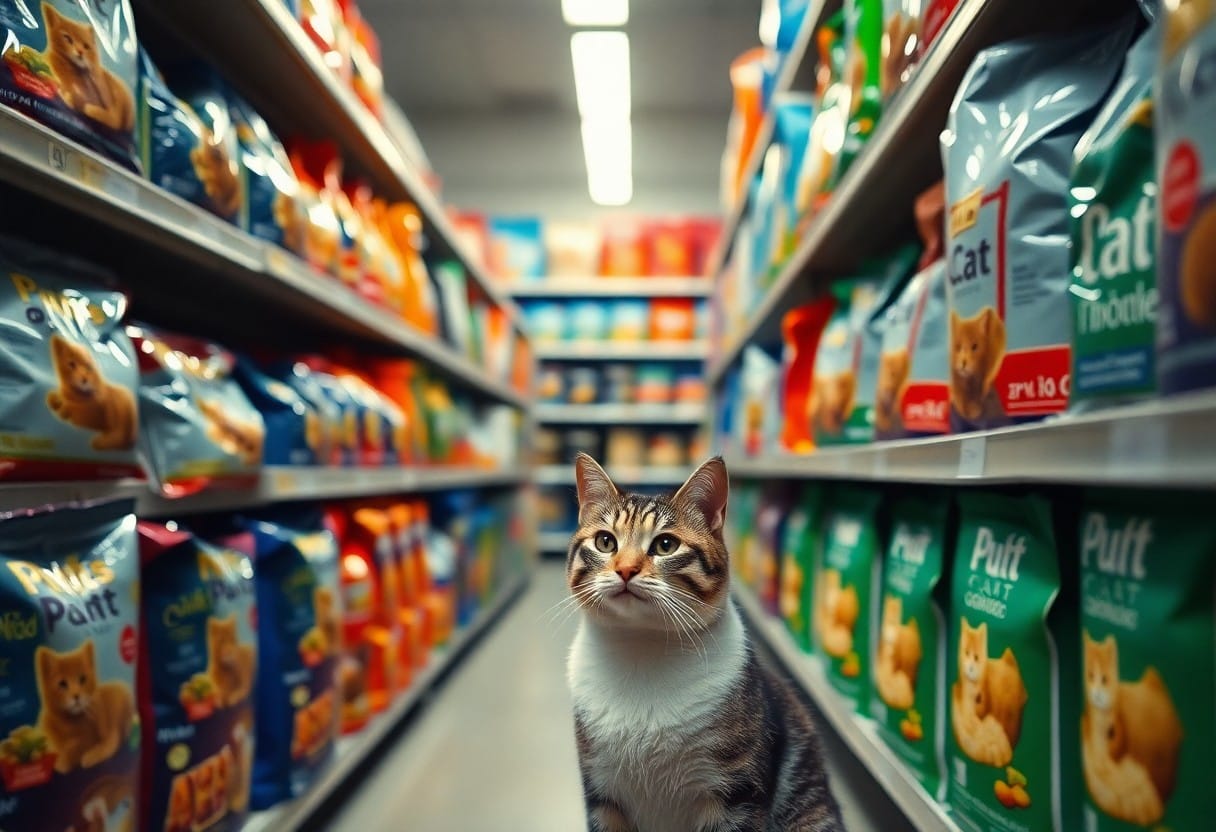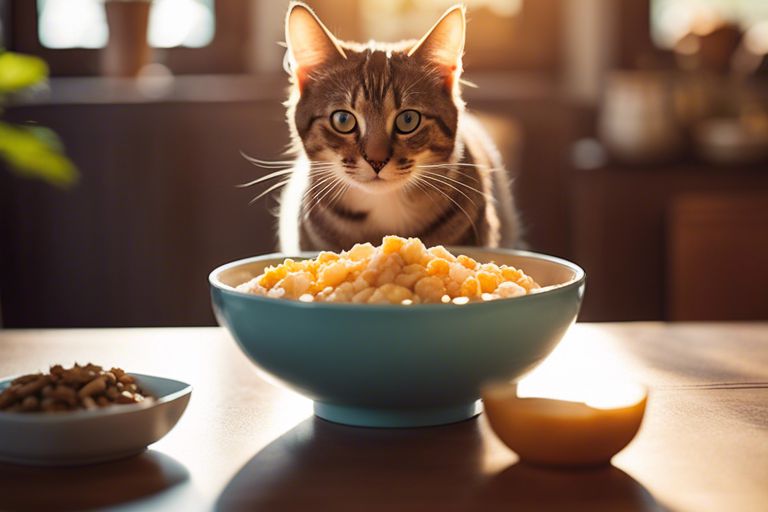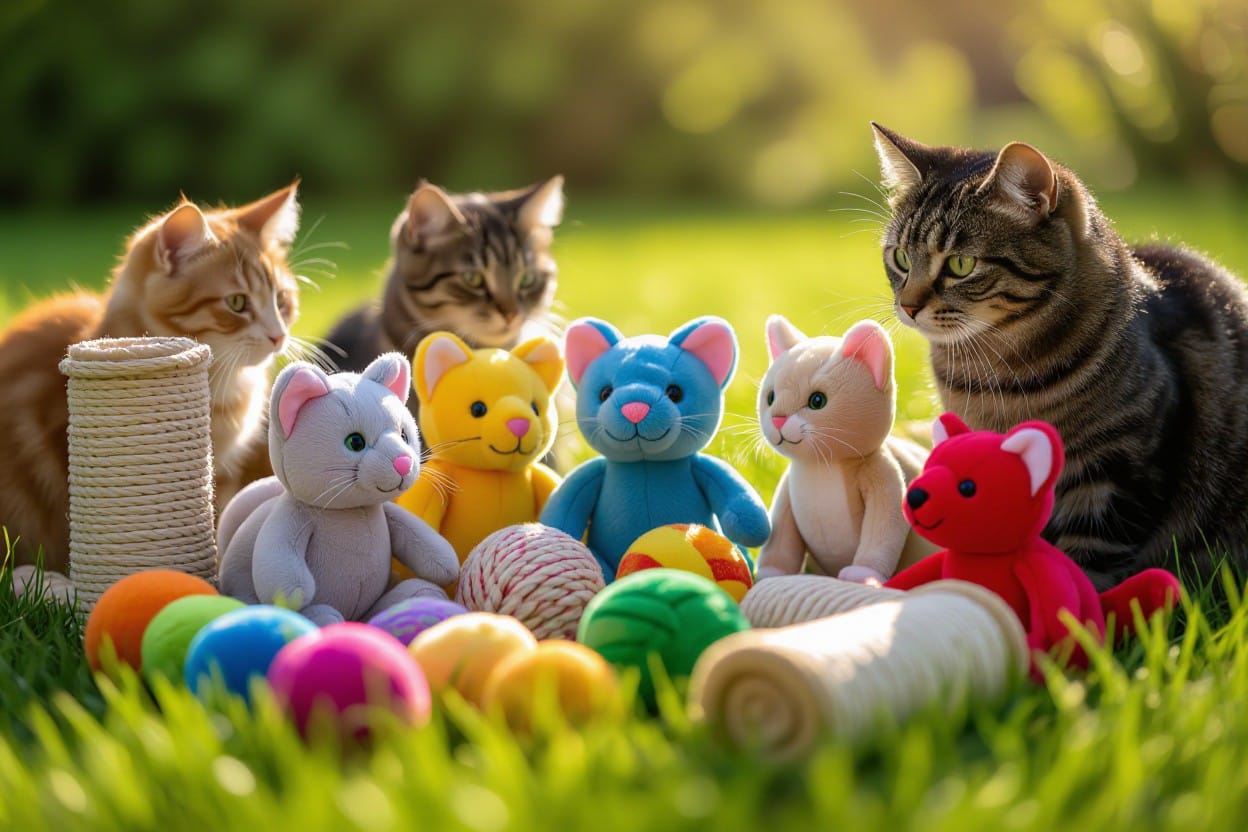Just like you would carefully select your own food, choosing the right cat food brand for your pet is vital to their health and happiness. With countless options available, the decision can be overwhelming, but understanding your cat’s unique nutritional needs is crucial. By focusing on quality ingredients, age-appropriate formulas, and specific dietary requirements, you can ensure your feline friend enjoys a balanced diet that promotes a long, healthy life. This guide will walk you through each step, helping you make an informed choice for your beloved companion.
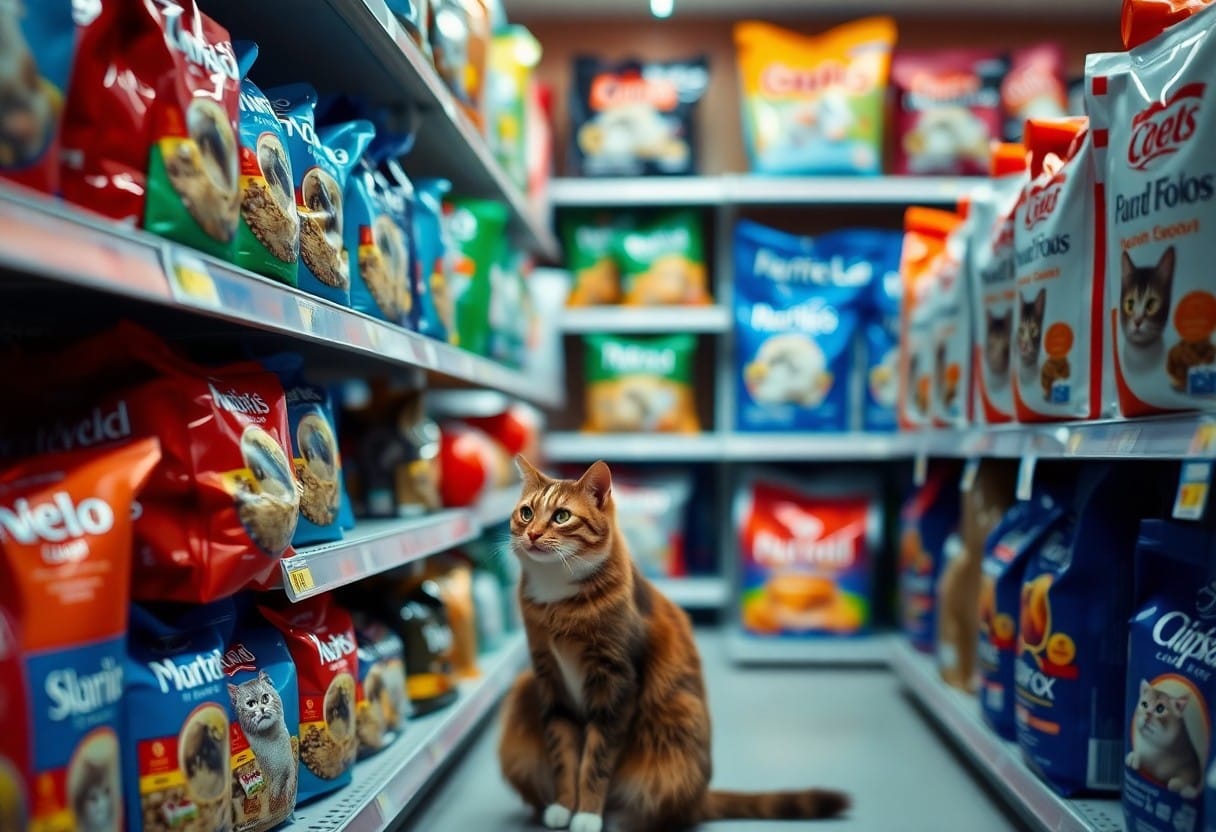
Key Takeaways:
- Evaluate the ingredients list for high-quality protein sources and avoid fillers like corn and soy.
- Consider your cat’s specific dietary needs based on their age, health status, and activity level when selecting a food brand.
- Research reputable brands and their manufacturing practices, looking for those that provide transparency and have positive reviews from pet owners.
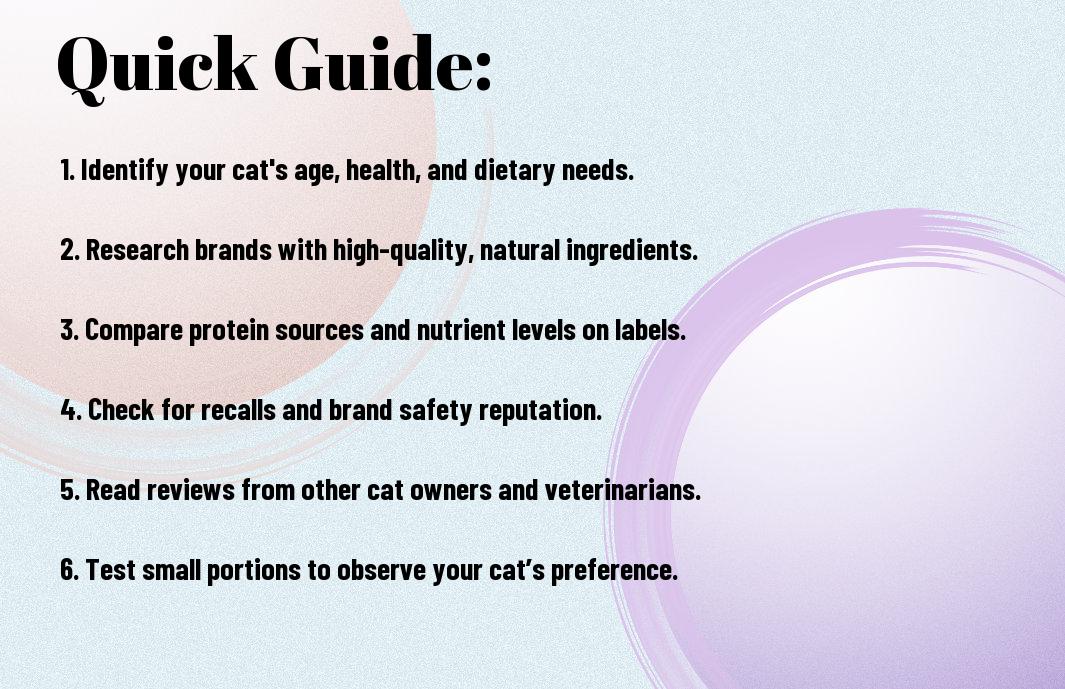
Understanding Types of Cat Food
For cat owners, it’s vital to understand the various types of cat food available. Choosing the right diet for your feline friend can greatly impact their health and wellbeing. Here are the common types of cat food you should consider:
| Type | Description |
| Dry Cat Food | Affordable, convenient option with a longer shelf life. |
| Wet Cat Food | Higher moisture; helps with hydration and palatability. |
| Raw Diet | Natural diet that mimics a cat’s ancestral eating habits. |
| Freeze-Dried Food | Easy to store while maintaining nutrients; requires water to rehydrate. |
| Prescription Diets | Formulated for specific health issues; requires vet approval. |
Dry Cat Food
For busy cat owners, dry cat food offers a practical option. It’s easy to measure, store, and can last longer than wet food. Moreover, it can also help maintain your cat’s dental health due to its crunchy texture. However, ensure you choose a quality brand that has appropriate nutritional value to meet your pet’s dietary needs.
Wet Cat Food
Understanding the benefits of wet cat food is vital for your pet’s hydration. This type of food generally contains more moisture than dry food, making it an excellent option for encouraging your cat to drink more water. Plus, its rich flavor can be more appetizing, especially for picky eaters.
With wet cat food, you also provide your cat with a more natural texture and a greater variety of flavors. The moisture content is beneficial for maintaining urinary tract health and overall hydration, which is vital for cats prone to kidney issues. Always consider the ingredients to avoid fillers, ensuring your pet’s meal is packed with high-quality proteins.
Raw and Freeze-Dried Options
To cater to your cat’s instinctual diet, raw and freeze-dried options are gaining popularity. These foods aim to replicate a cat’s natural prey, supplying vital nutrients in a form your feline can thrive on.
FreezeDried options are particularly beneficial since they preserve nutrients and enhance flavor while being easy to handle. However, you must be cautious with raw diets as they may pose risks of bacterial contamination if not stored properly. Ensure you maintain hygiene and consider consulting your veterinarian before switching to an unprocessed diet.
Key Factors to Consider
Some vital factors to consider when choosing the right cat food brand for your pet include:
- Nutritional needs
- Age and health of your cat
- Ingredients quality
- Brand reputation
- Price versus quality
After evaluating these factors, you can make a more informed decision about the best food for your feline friend.
Nutritional Needs
You should assess your cat’s specific nutritional needs before selecting a food brand. Cats are obligate carnivores, meaning their diet must primarily consist of animal-based proteins. Ensure the food contains vital nutrients like taurine, vitamins, and minerals to promote overall health and well-being.
Age and Health of Your Cat
The age and health of your cat significantly influence its dietary requirements. Young kittens need a diet rich in calories and protein for rapid growth, while elderly cats may benefit from foods that support joint health and digestion.
Plus, if your cat has any specific health issues such as diabetes, kidney disease, or allergies, it becomes even more important to choose an appropriate food. A diet tailored to their health condition can help manage symptoms and improve quality of life. Consult your veterinarian for recommendations on the best food options that address your cat’s unique age and health needs.
Pros and Cons of Different Brands
Not all cat food brands are created equal. Evaluating the pros and cons can help you make an informed decision. Below is a concise breakdown of popular and niche brands, highlighting important factors you should consider before making a choice.
| Pros | Cons |
|---|---|
| High-quality ingredients | Higher price point |
| Veterinary recommended | Limited availability |
| Balanced nutrition | Ingredient sourcing concerns |
| Diverse flavor options | Some pets may be picky |
| Positive brand reputation | Confusing product lines |
Popular Brands
Assuming you prefer well-known options, popular cat food brands often provide reliable nutrition backed by extensive research. Brands like Hill’s Science Diet, Royal Canin, and Purina Pro Plan are commonly recommended due to their consistent quality and palatability. However, be sure to evaluate specific formulas that suit your cat’s unique dietary needs.
Niche Brands
To broaden your cat food choices, consider niche brands that focus on specialized diets. These brands typically cater to specific dietary needs or cater to *all-natural* ingredients, often using locally sourced materials in their recipes. While they may not be as widely recognized, they offer unique options worth exploring.
A variety of niche brands cater to specific needs, such as grain-free or raw diets, providing specialized nutrition for your feline friend. These brands often emphasize *sustainability*, *ethical sourcing*, and *health benefits*. Look for options that meet your cat’s *specific health concerns*, such as allergies or sensitivities, while prioritizing *whole foods* and *natural ingredients*. However, be cautious about potential price differences and *limited availability*, and always check for *AAFCO certification* to ensure your chosen product meets nutritional standards.
A Step-by-Step Guide to Choosing Cat Food
Once again, taking the time to choose the right cat food for your pet can greatly contribute to their long-term health and happiness. By following this simple step-by-step guide, you can make informed decisions that cater to the specific needs of your feline friend.
| Step | Description |
| 1 | Researching Brands |
| 2 | Evaluating Ingredients |
Researching Brands
StepbyStep, start by researching reputable cat food brands. Look for company histories, product recalls, and customer reviews to gauge the reputation of each brand. Ensure the brands you consider are well-established and prioritize quality in their recipes.
Evaluating Ingredients
Clearly, the ingredients list is a vital aspect of selecting your cat’s food. Focus on high-quality sources of protein, such as real meat, and be cautious of fillers like corn and soy that offer little nutritional value.
Food labeling can often be misleading; thus, understanding the ingredients is crucial. Look for whole meats at the top of the list, as they provide your cat with crucial amino acids. Avoid foods filled with artificial preservatives and additives, as they may pose health risks over time. Instead, choose brands that incorporate natural preservatives, which are safer for your furry friend. Regularly consulting your vet about dietary recommendations will also aid in making the best choices for your cat’s nutrition.

Tips for Transitioning to New Cat Food
Unlike simply switching to a new cat food brand, a thoughtful transition can help prevent digestive issues. Consider the following tips:
- Begin by mixing small amounts of the new food into your cat’s current food.
- Gradually increase the ratio of the new food over 7-10 days.
- Monitor your cat for any signs of upset stomach.
- Ensure fresh water is always available.
Perceiving a seamless transition requires patience and observation.
Gradual Change
Transitioning to a new cat food should be a gradual process to prevent gastrointestinal issues. Start by introducing about 25% of the new food mixed with 75% of your cat’s current food, and gradually increase the proportion of the new food over a week or two.
Monitoring Your Cat’s Response
One crucial aspect is closely observing your cat’s behavior and health. Signs to watch for include changes in appetite, stool consistency, and energy levels.
It is important to note that diarrhea, vomiting, or loss of appetite can indicate that your cat is having difficulty adjusting to the new food. In contrast, a positive response might include an increase in energy or a return to normal eating habits. If your cat exhibits serious responses such as prolonged vomiting or lethargy, consulting your veterinarian is vital for your pet’s health and well-being.
Expert Advice and Recommendations
After evaluating various options, seeking expert advice is crucial to ensure you make the best decision for your cat’s dietary needs. Veterinarians and pet nutritionists possess the knowledge and expertise to guide you toward brands that align with your pet’s specific health requirements, age, and lifestyle. Always consider their recommendations as a foundation for choosing the right cat food brand.
Consulting Your Veterinarian
On your journey to selecting the ideal cat food, consulting your veterinarian should be a top priority. Your vet can assess your cat’s health history, dietary needs, and any specific conditions that might affect their nutrition. This personalized guidance empowers you to make informed decisions tailored to your furry companion’s unique requirements.
Community Insights
Insights from fellow cat owners can be incredibly valuable in your search for the right food brand. Engaging in conversations within online forums, social media groups, or local pet communities allows you to gather real-world experiences and recommendations. Hearing from others who have navigated similar challenges can help you avoid brands with poor quality ingredients and lead you to options that receive enthusiastic endorsements from cat owners.
Understanding the perspective of other cat owners is crucial for making informed decisions about your pet’s food. Their experiences can reveal key insights about the nutrition profiles and digestibility of various brands. Pay attention to feedback regarding negative reactions to specific products or mentions of improvements in pets’ health after switching to a different brand. Your community’s shared knowledge can significantly aid in finding a cat food that not only meets your standards but also keeps your feline friend happy and healthy.
Final Words
Drawing together the insights from this guide, selecting the right cat food brand for your pet involves careful consideration of their unique needs, including age, health, and preferences. By evaluating ingredient quality, nutritional balance, and company reputation, you can make an informed decision that supports your cat’s health and happiness. Don’t hesitate to consult with your veterinarian for personalized recommendations. With the right approach, you can elevate your pet’s diet and enhance their overall well-being.
FAQ
Q: What are the key factors to consider when selecting a cat food brand?
A: When choosing a cat food brand, consider the nutritional completeness of the food, ensuring it meets the specific dietary needs of your cat based on their age, health status, and lifestyle. Evaluate the ingredient quality; look for high-protein sources and avoid fillers such as corn and soy. Additionally, check for any certifications or endorsements from veterinary organizations to ensure the brand adheres to high production standards.
Q: How can I determine if a cat food brand is safe and reliable?
A: To ascertain the safety and reliability of a cat food brand, conduct research on the company’s reputation through online reviews and feedback from other pet owners. Check if the brand has had any recalls in the past, as well as their response to such incidents. Look for transparency regarding ingredient sourcing and manufacturing processes on their website. It can also be beneficial to consult with your veterinarian for recommendations on trusted brands.
Q: Are there any specific ingredients I should avoid in cat food?
A: Yes, it’s advisable to avoid cat foods that contain excessive fillers like artificial colors, flavors, and preservatives. Ingredients such as by-products, unspecified meat meals, and grains can also be red flags, especially if your cat is known to have sensitivities or allergies. Always read the label carefully, and if in doubt, consult with your vet about any ingredients that may not align with your cat’s health needs.
